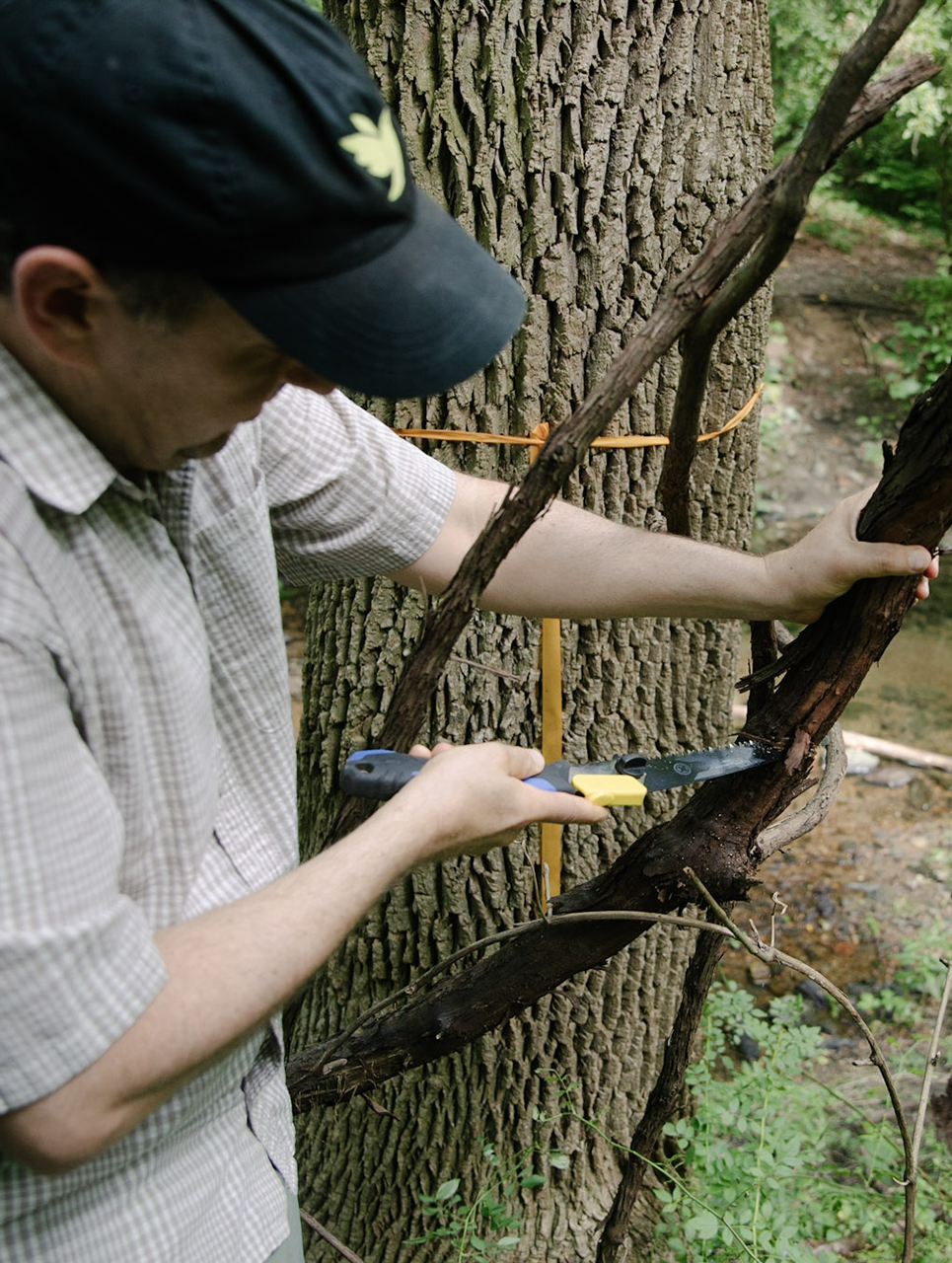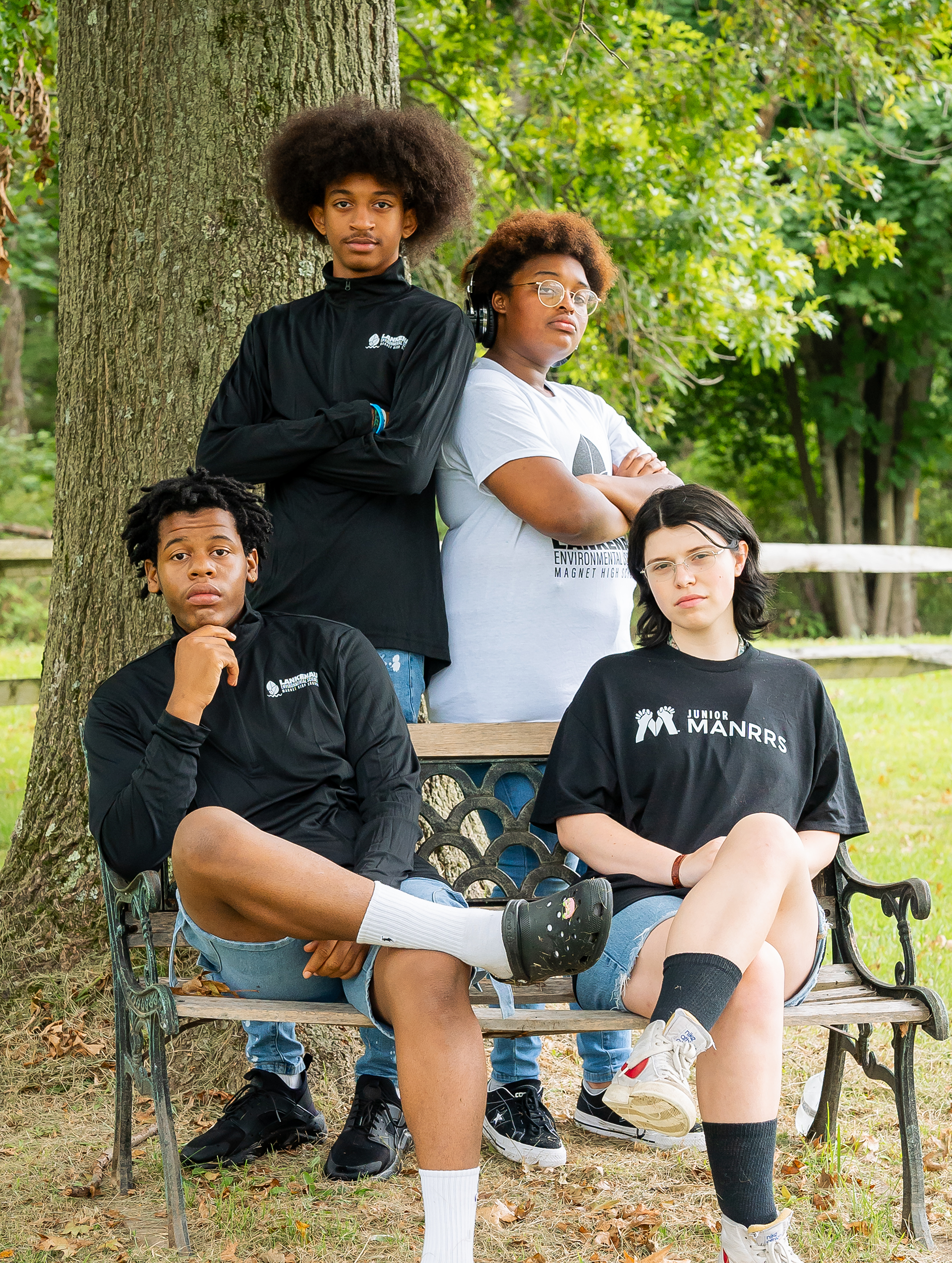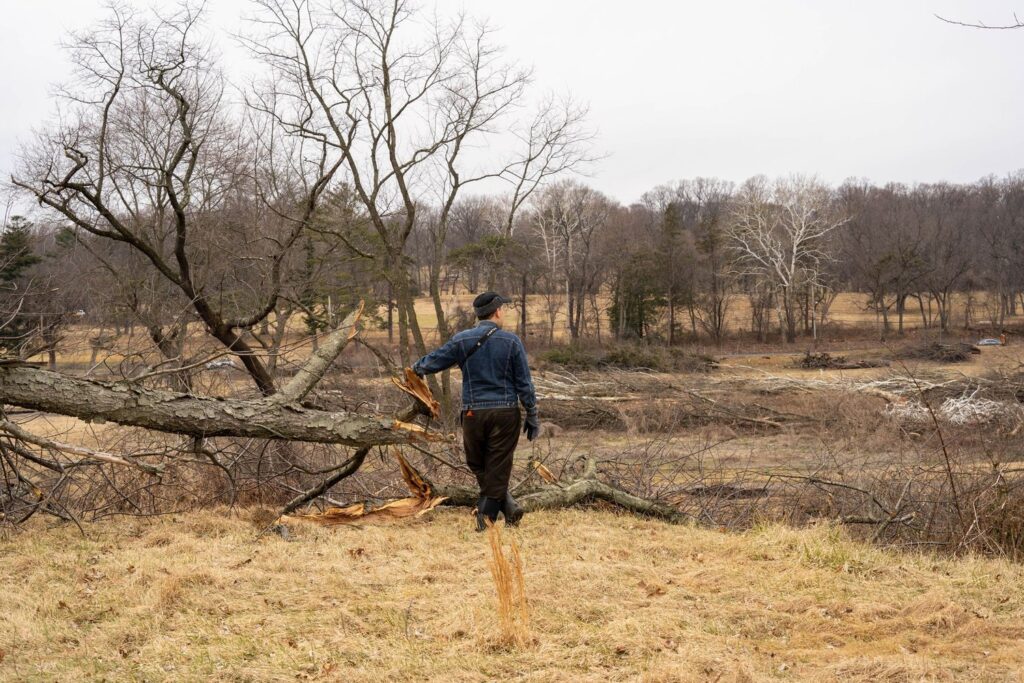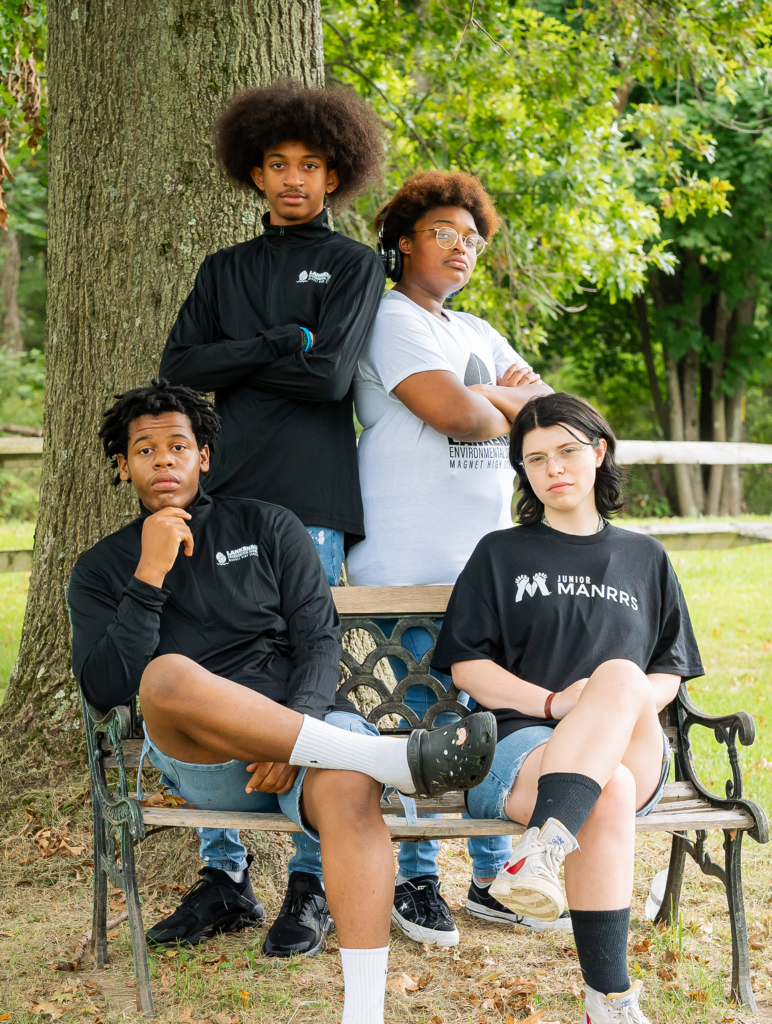I have paused my war on grapevines. They just aren’t putting up much of a fight anymore.
“War” might be putting it strongly, but for nearly 20 years I have cut them down whenever I have had the opportunity and the tools in hand (loppers, or a pruning saw for the big ones). Lately pretty much all the Philly grapevines I find are already dead.
Now, anyone who is familiar with wild grapevines knows they can look kind of dead in the best of circumstances. The leaves are often high above the ground where they’re hard to spot, while below the bark peels off their gnarled, saggy stems. But you can tell the difference as soon as you get past that bark. The live wood is soft and damp. Dead vines have a dry corky texture that catches at steel as you cut through.
“Cut on sight” is the standard order for vines draped from trees in urban parks. Oriental bittersweet, English ivy and even the native grapevines can weigh a tree down to the point that it becomes vulnerable to tipping over or losing branches.
It is not the vines’ fault. They have evolved to take advantage of forest edges or other breaks in the canopy. Without shading tree leaves, the vines benefit from sunlight hitting them broadside. In a larger, intact forest, grapevines dragging down a few trees is just nature at work, but in narrow urban parks with lots of edges, they can add up to a problem. So park volunteers and professionals clear vines from trees as a matter of course.

Eurasian species of vines provide the grapes we eat and the juice we drink (fresh and fermented). We grow them in neat vineyard rows where they barely resemble their wild cousins. Those domesticated vines grow, however, from the roots of some of the same species we clear off of trees in our parks. In the late 1800s a tiny insect, grape phylloxera, devastated domesticated grapevines in Europe. The bugs, native to North America, killed grapevines by feeding on fluids from their roots, so the solution was to graft the vulnerable vines onto roots from American species of grapes, which had evolved with the phylloxera and thus had natural resistance. The North American grape species saved viticulture, but in the woods where they grow wild, humans have largely forgotten them.
Nonhuman animals, however, remember. Wild grapes feed bears, raccoons, turkeys and all sorts of other critters. They can also be yummy for humans to munch on. But since, unlike the trees they grow on, they produce no wood and are often regarded as tree-felling pests, state agencies that deal with forests tend not to do much to protect them. And until now they haven’t seemed to need protection.
Spotted lanternflies can be harmful to lots of plant species, but they are particularly lethal to grapevines.
I don’t know what is killing off the grapevines, but I’ve got a guess: everyone’s favorite bug villain, the spotted lanternfly. Concern about cultivated grapes and other crops has driven the all-hands-on-deck reaction to the East Asian plant hoppers. Spotted lanternflies can be harmful to lots of plant species, but they are particularly lethal to grapevines. There has been little research on their effect on wild species of grapes, but I see no reason to assume that the lanternflies would hurt them any less than they do the cultivated grapes.
Insecticides have proven to be effective at killing spotted lanternflies in vineyards, which already have to spray for other insect pests — like Japanese beetles — that would otherwise devour the cultivated grapevines. But spraying millions of acres of forest with insecticides is both impractical and probably a bad idea for other reasons. The wild grapevines are on their own.
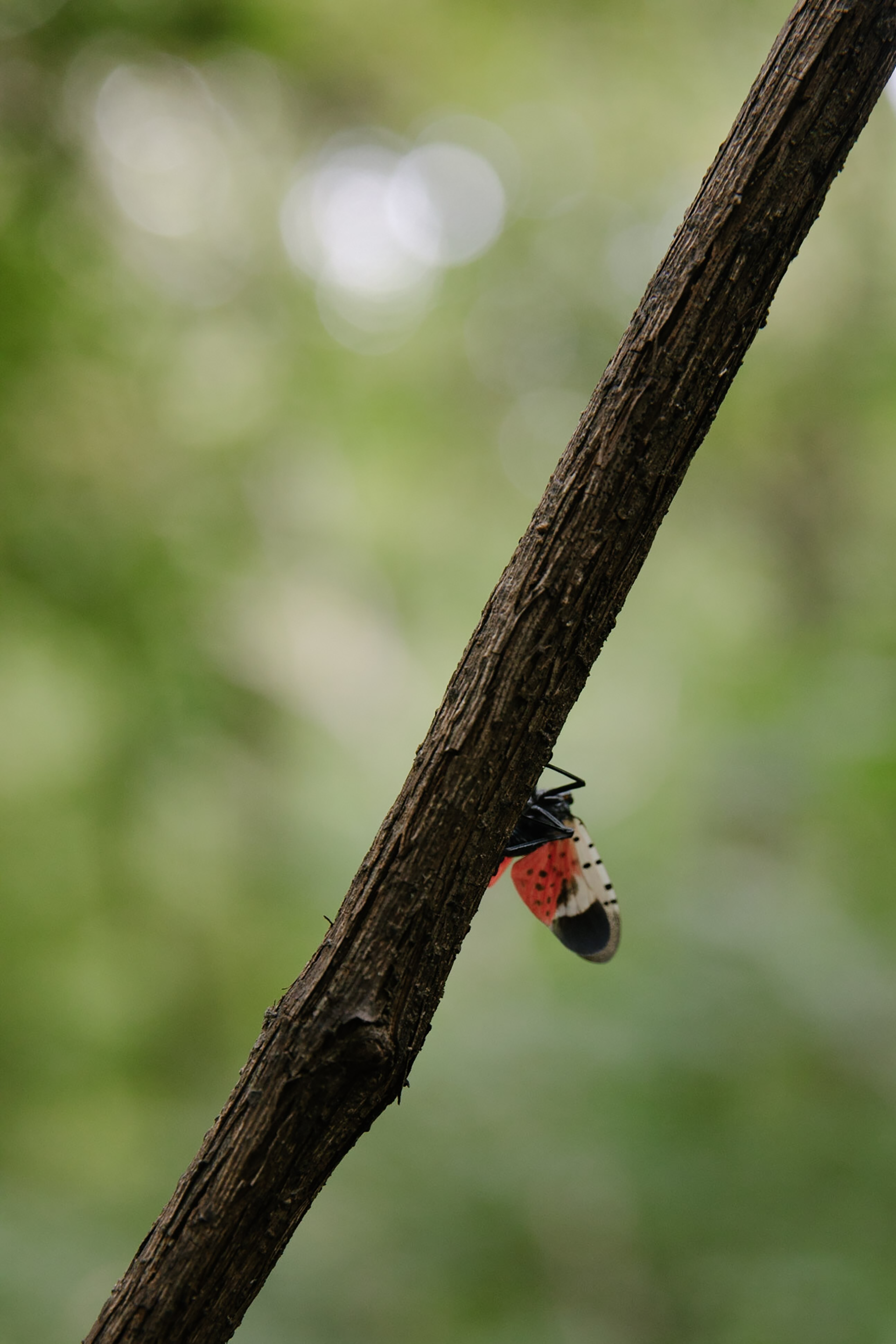
But even economically important plants can’t easily be saved from exotic pests. The emerald ash borer, a shiny beetle the size of a grain of rice, is ravaging North America’s ash trees, essentially wiping them off the continent. The best anyone can do for this ecologically and economically important tree in the short term is to treat a few larger ash trees in parks and gardens. Researchers are working on longer-term solutions such as distributing tiny wasps that afflict the ash borers, but those will take decades to make a dent on a continental scale.
I still have a lot of questions about the fate of the grapevines. On my own I have observed that grapevines in more remote areas, even within the lanternflies’ terrain, seem to be doing better than those in Philadelphia. Perhaps it matters how close they are to trees of heaven, the lanternflies’ favorite host plant, which are more abundant in urban settings.
Maybe someday the lanternflies will meet their match and we’ll know whether they were what won the war on grapevines. Until then, I will remain a neutral observer.

